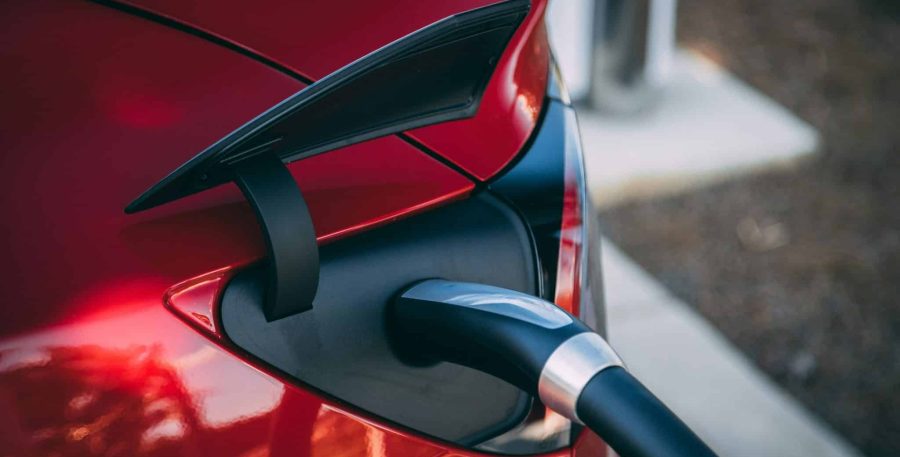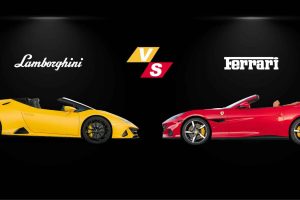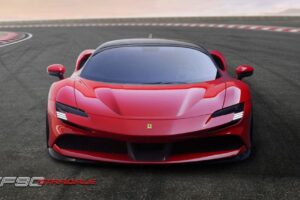In recent years, there has been a clear trend in the automotive industry towards hybrid propulsion compared to conventional engines powered exclusively by gasoline. Manufacturers, aware of the performance potential offered by electrification, have decisively integrated hybridization into many of their models.
Although initially hybrid technology was mostly associated with economic and utilitarian cars, it has now become an essential option in the range of any manufacturer. The luxury brands segment has not been an exception, firmly betting on hybrid propulsion in their supercars. Renowned and prestigious brands like Ferrari, Lamborghini, Porsche, or McLaren have firmly embraced this hybrid trend in their supercars, leading to the development of models that significantly surpass the performance of those powered solely by internal combustion engines.
In this article, we will explore the best hybrid supercars currently available on the market.
Ferrari 296 GTB
This is the first Ferrari powered by a 2.9-liter twin-turbo V6 engine, departing from the usual V8 and V12 engines that typically characterize the Cavallino Rampante’s sports cars. This new propulsion system, directly derived from Formula 1 technology, delivers a power output of 663 horsepower. Combined with a second electric motor providing an additional 166 horsepower, it achieves an impressive total power of 830 horsepower and a maximum torque of 740 Nm. With these outstanding performance figures, the Ferrari 296 GTB accelerates from 0 to 100 km/h in just 2.9 seconds, reaches 200 km/h in 7.3 seconds, and achieves a top speed of 330 km/h. Additionally, it offers a fully electric range of up to 25 kilometers at a maximum speed of 135 km/h.
In terms of design, it boasts a very compact and streamlined appearance, with a short and sharp front bumper, without being excessively low. It is complemented by a wide air intake, a distinctive carbon splitter, and an elongated hood. The rear is characterized by a flat and slightly concave design, staying at a low height, along with a centered and considerably elevated exhaust outlet.
Regarding its market value, its price is around 300,000 euros, surpassing models like the Roma and the Portofino, and coming very close to the F8 Tributo.
In our fleet, we have a Ferrari 296 GTB in Rosso Corsa red, with which you can experience the incomparable sensation of taking control of a hybrid supercar.
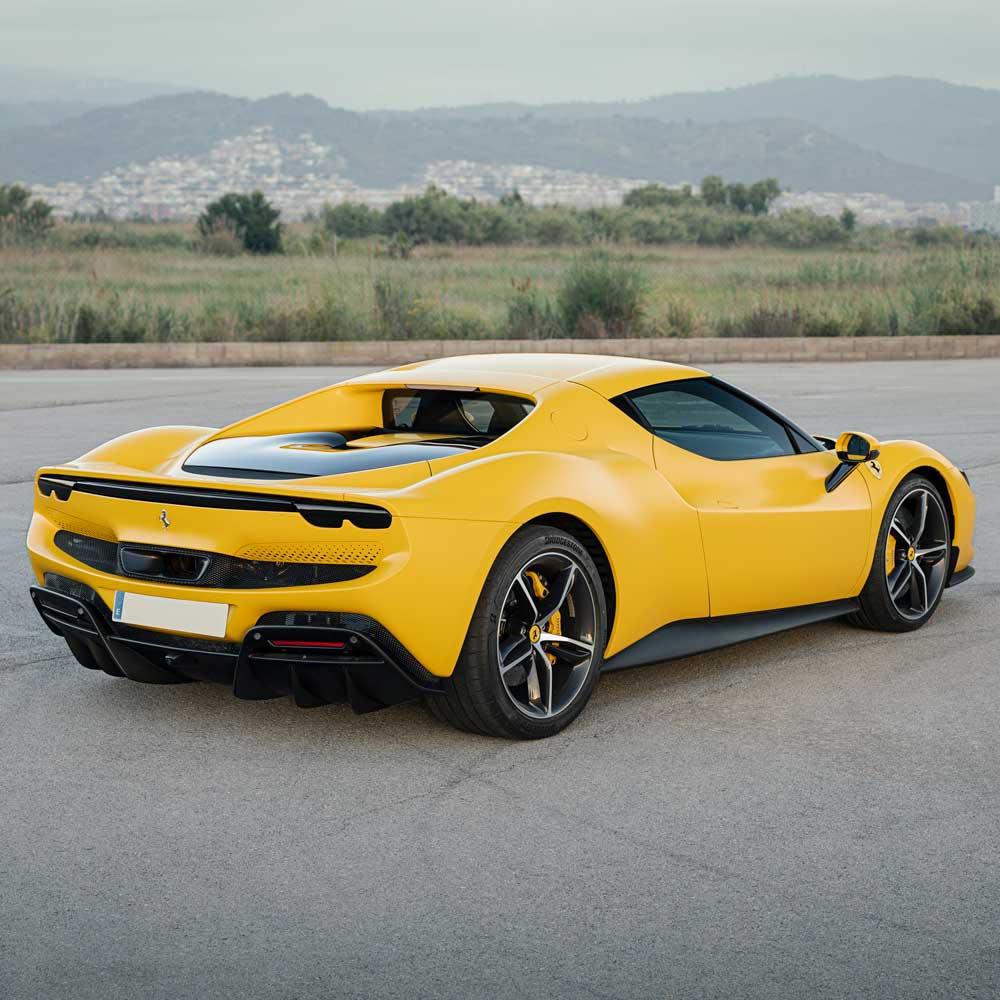
Porsche 918 Spyder
The predecessor to the Porsche Carrera GT, it is the first production hybrid from Porsche. Equipped with a 4.6-liter naturally aspirated V8 engine producing 608 horsepower, directly derived from the Le Mans RS Spyder prototype, and complemented by two electric motors, it achieves a sensational combined power of 887 horsepower and a maximum torque of 1,275 Nm. Additionally, it features a 7-speed PDK dual-clutch gearbox optimized specifically for this model.
In terms of performance, the Porsche 918 Spyder accelerates from 0 to 100 km/h in just 2.8 seconds, from 0 to 200 km/h in 7.9 seconds, and reaches 300 km/h in 23 seconds, with a top speed exceeding 340 km/h. Furthermore, being a plug-in hybrid vehicle, it has the ability to recharge its battery, providing it with a fully electric range of up to 30 kilometers at a maximum speed of 150 km/h.
Regarding its visual appearance, it exhibits a blend of aggressiveness and sophistication. Its smooth lines are strategically interrupted by multiple air intakes, not only functional but also aesthetically impactful. At the rear, the exhausts positioned above, behind the occupants’ heads, along with the discreet rear wing, add a distinctive touch that not only enhances its aesthetics but also plays an essential role in improving the car’s aerodynamics.
With only 918 units produced, the Porsche 918 Spyder was launched in 2013 with a base price of approximately 790,000 euros, excluding additional equipment and customization options. Today, its estimated value exceeds 1.5 million euros.
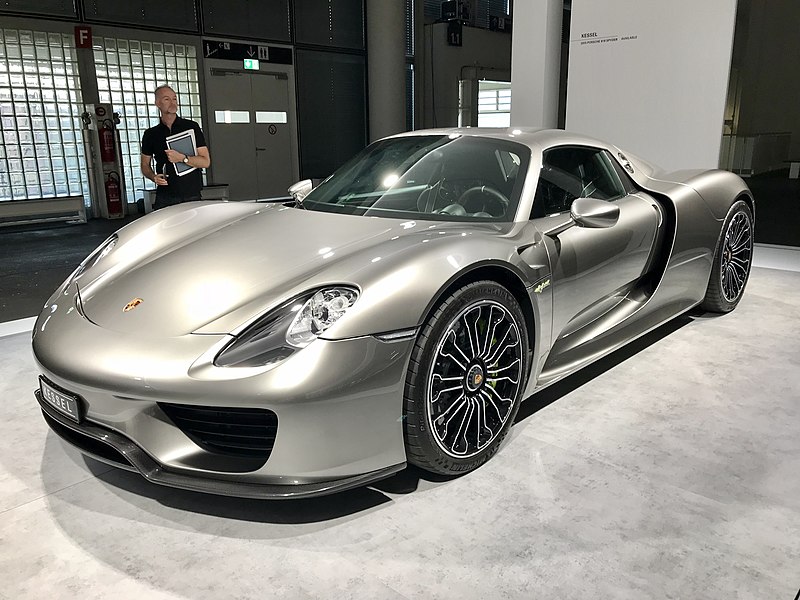
Ferrari LaFerrari
The successor to the iconic Ferrari Enzo, it was introduced by the prestigious Maranello firm in 2013, marking a milestone as the first model in the brand’s history equipped with a hybrid propulsion system. It combines a 6.3-liter naturally aspirated V12 engine, capable of generating 800 horsepower, with a 163-horsepower electric motor. The combination of both engines generates an astonishing total power of over 960 horsepower and a torque of 968 Nm, achieving acceleration from 0 to 100 km/h in just 3 seconds, from 0 to 200 km/h in 6.9 seconds, and a top speed of 350 km/h.
From an aesthetic point of view, the design of the LaFerrari is unequivocally oriented towards aerodynamics, evidenced by a descending and sharp nose that highlights its muscular wheel arches. The hood and sides of the vehicle incorporate strategic air intakes that not only play an essential role in cooling vital components such as the engine and brakes but also contribute significantly to the car’s aerodynamic stability. Additionally, with clear inspiration from Formula 1 aesthetics, it incorporates a new front spoiler, suspended from a central pylon under the nose.
The rear of the LaFerrari stands out as its most distinctive feature. Two deep grooves run along the prominent wheel arches, complemented by a generous active spoiler. The rear lower section, made entirely of carbon fiber, is distinguished by deep openings, a generous diffuser, and a dual exhaust system.
It is an exclusive model, crafted in a production run of just 499 units, debuted in 2013 with an initial price tag of approximately 1.3 million euros. Today, in 2024, its value has soared to over 3.5 million euros.
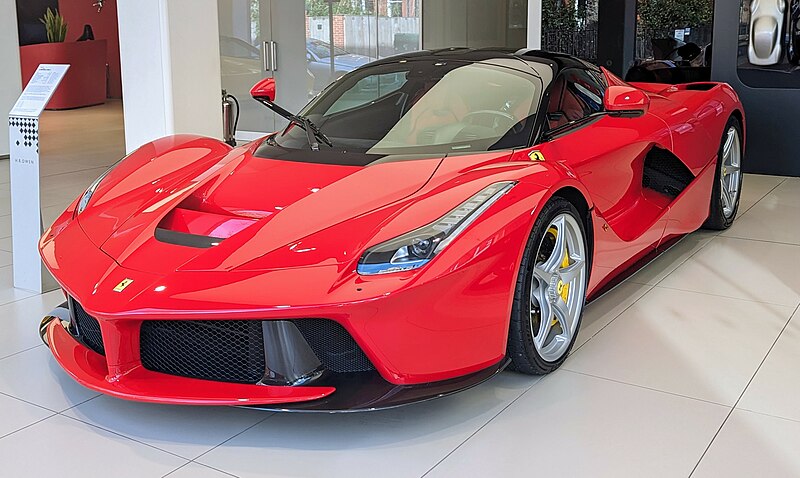
McLaren P1
With the launch of the McLaren P1 in 2013, McLaren positioned itself as one of the pioneers in the creation of hybrid hypercars, competing directly with the Ferrari LaFerrari and the Porsche 918 Spyder. The McLaren P1, the direct successor to the McLaren F1, incorporates hybrid technology derived from Formula 1 and is limited to only 375 units.
Powered by a potent twin-turbocharged 3.8-liter V8 engine, the P1 develops 727 horsepower. Combined with a 177 horsepower electric motor, the result is a total power output of 903 horsepower and a maximum torque of 900 Nm. Thanks to this formidable combination, the P1 achieves an electronically limited top speed of 350 km/h and can accelerate from 0 to 100 km/h in 2.8 seconds, from 0 to 200 km/h in 6.8 seconds, and from 0 to 300 km/h in 16.5 seconds. In electric mode, it has a range of 10 kilometers at a maximum speed of 160 km/h.
Aerodynamics play a fundamental role in the design of the McLaren P1. Its body, made entirely of carbon fiber, sits on a monocoque chassis and features a teardrop-shaped cockpit inspired by fighter jets, which rises from the hood to channel air through the rear wing. Aerodynamic elements, such as the active rear wing and twin air intakes on the front, sides, and roof, not only enhance aesthetics but also have a direct impact on stability and track performance.
The price of the McLaren P1 may vary depending on customization options, but at its launch in 2013, its base price was around 1 million euros.
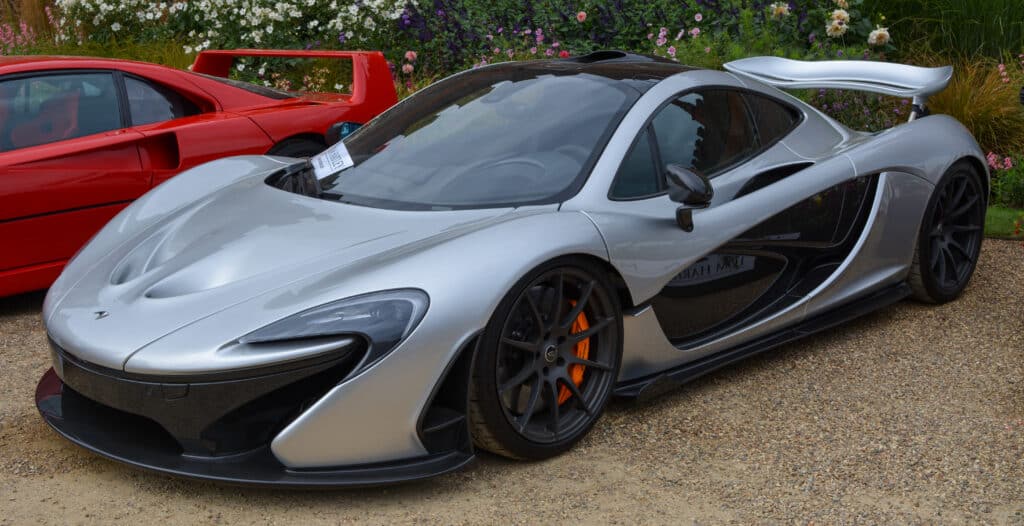
Ferrari SF90 Stradale
Named after the same name as the Formula 1 race car, the Ferrari SF90 Stradale is the first Ferrari equipped with a plug-in hybrid powertrain. Unlike the Ferrari LaFerrari, the first Ferrari model to incorporate a hybrid powertrain system, the SF90 Stradale can be plugged in to recharge its battery and operate in fully electric mode over short distances.
Powered by a turbocharged 3.9-liter V8 engine, capable of generating 780 horsepower and 800 Nm of torque, along with three electric motors contributing an additional 220 horsepower, it achieves an astonishing total power output of 1000 horsepower. These exceptional performance figures translate into acceleration from 0 to 100 km/h in just 2.5 seconds, from 0 to 200 km/h in 6.7 seconds, and a top speed of 340 km/h. Additionally, it features all-wheel drive and a fully electric range of 25 km at a maximum speed of 135 km/h.
Aesthetically, it boasts an aggressive and aerodynamic appearance. Standout features include ventilation ducts just below the headlights and on the side, giving it a unique identity. The V-shaped front design, a characteristic trait of Ferrari sports cars, and the rear, with a fixed rear wing and two centrally located elevated exhaust outlets positioned above a carbon fiber diffuser, contribute to its imposing image.
In contrast to the Ferrari LaFerrari, the SF90 Stradale is produced in mass, rather than in a limited run. Its base price is 430.000 euros, while the Fiorano version, with aerodynamic enhancements, weight reduction, and performance-oriented adjustments, rises to 480.000 euros.
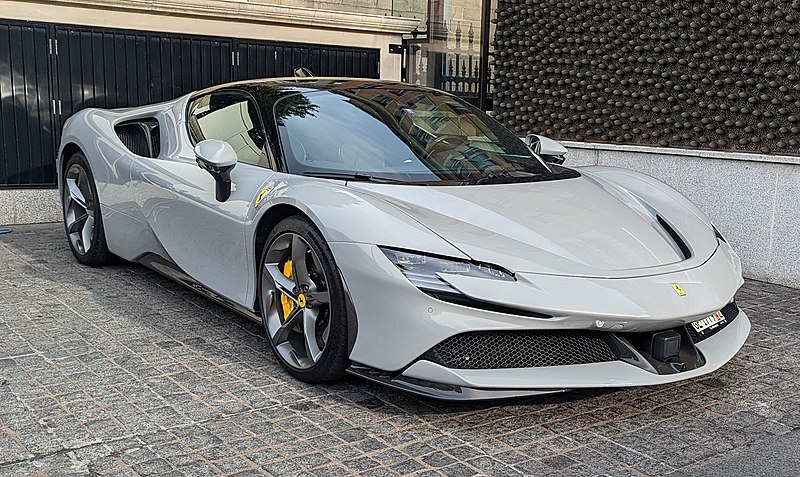
Lamborghini Sián FKP 37
This is one of the most exclusive models from the Sant’Agata Bolognese firm, with a production limited to just 63 units, paying homage to Lamborghini’s founding year in 1963. The Sián is based on the Aventador SVJ, sharing its chassis and suspension, as well as the impressive 6.5-liter naturally aspirated V12 engine delivering 774 horsepower. However, it stands out by integrating a small electric motor that adds an additional 34 horsepower, giving it a total output of 808 horsepower and making it Lamborghini’s first production hybrid.
With these astonishing performance figures, the Sián is capable of reaching 100 km/h from a standstill in less than 2.8 seconds, hitting 200 km/h in just 8.6 seconds, and achieving a top speed of around 350 km/h. However, what truly distinguishes it from other hybrid vehicles is its revolutionary approach to electric propulsion, as it dispenses with traditional lithium-ion batteries and incorporates a supercapacitor integrated into the gearbox. This innovative technology allows for the storage and release of large amounts of energy quickly and efficiently, providing an additional boost that significantly surpasses the capabilities of conventional lithium-ion batteries.
When looking at its exterior design, there is a clear homage to the iconic Countach model, reflected in its triple taillights, the distinctive hood scoop, and roof, as well as the strategically placed air intakes on the doors. Its aesthetic showcases sharp lines, aerodynamic elegance, and an unmistakable silhouette, accentuated by a body entirely made of carbon fiber.
Given its exclusivity and the scarcity of available units, the base price of the Lamborghini Sián significantly rises compared to other models from the brand, reaching the astonishing figure of 3.19 million euros.

McLaren Speedtail
The McLaren Speedtail is the first Hyper-GT from the Woking-based manufacturer, standing out as the fastest and most aerodynamically efficient model ever created by McLaren. It belongs to the exclusive Ultimate Series, representing the highest level of excellence in the brand’s production models, following in the footsteps of the iconic F1 from the 1990s, and the modern P1, Senna, Elva, and Sabre. Additionally, the Speedtail is the first modern McLaren to revive the three-seater design of the iconic F1, with the driver’s seat positioned centrally and slightly forward, while the other two additional seats are located on each side and slightly behind the driver.
Powered by a hybrid system, it combines a powerful 4.0-liter twin-turbo V8 engine with an electric motor, generating a combined power of 1,070 horsepower and a maximum torque of 1,150 Nm. These spectacular figures translate into acceleration from 0 to 100 km/h in 2.9 seconds, from 0 to 200 km/h in 6.6 seconds, and from 0 to 300 km/h in just 12.8 seconds, reaching a colossal top speed of 405 km/h.
Regarding its design, the McLaren Speedtail takes aerodynamics to new levels never before seen in a street-legal sports car. Its bodywork and monocoque chassis, crafted entirely from carbon fiber, are sculpted into an elongated teardrop shape, enveloping the central driver’s position. From nose to tail, the airflow is uninterrupted, with a radically elongated tail being its most distinctive feature. The elegance of the design is highlighted by the minimization of unnecessary shutlines, creating a contour that appears sculpted from a single form. To reduce turbulence, the wheel arches feature aerodynamic covers, and the mirrors are replaced by mini digital cameras.
With only 106 units manufactured and considered the finest car ever built by McLaren, the Speedtail has an approximate base price of 2 million euros.
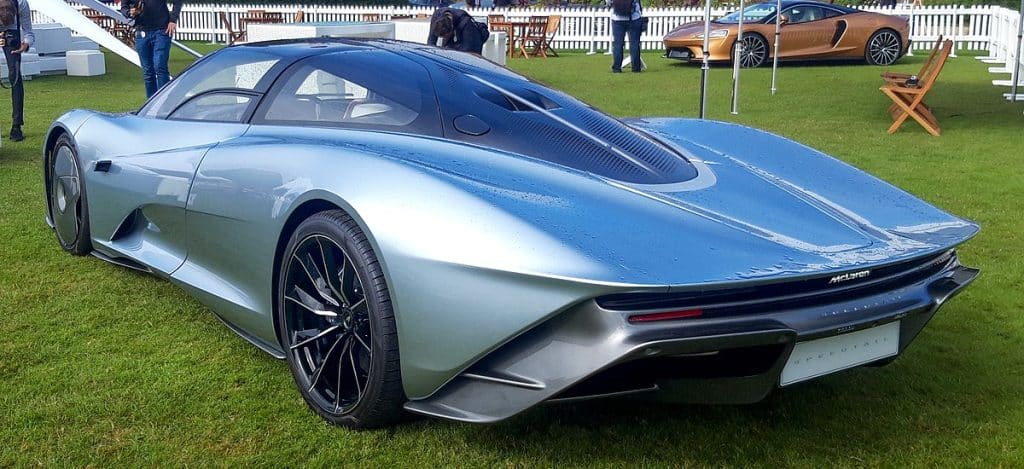
Koenigsegg Regera
Few hypercars come close to the colossal power and cutting-edge technology of the Koenigsegg Regera. Equipped with a 5.0-liter twin-turbo V8 engine producing 1,100 horsepower, and backed by three electric motors, it achieves an impressive total power of 1,500 horsepower and a monstrous torque of 2,000 Nm. With these figures, it can accelerate from 0 to 100 km/h in just 2.8 seconds and reach 400 km/h in less than 20 seconds.
One of its most distinctive features is its lack of a conventional gearbox. Instead, it incorporates the innovative Koenigsegg Direct Drive transmission, which, unlike traditional gearboxes, has no gears. It uses a hydraulic coupling to connect the engine and electric motors directly to the rear wheels, resulting in instant and smooth power delivery.
Technology is another strong point. It is the world’s first car to automate all body closures with a single touch of a button, a revolutionary advancement called the ‘Autoskin’ system. The Swedish manufacturer has fully robotized the Regera, allowing the doors, hood, and front trunk to open automatically with the remote control thanks to the vehicle’s advanced hydraulic system, leaving behind traditional handles. Additionally, all openings and exterior mirrors are equipped with proximity sensors to avoid collisions with nearby objects, such as curbs or low ceilings, during the opening or closing process.
With a limited production of only 80 units, its base price is 1.75 million euros excluding taxes.
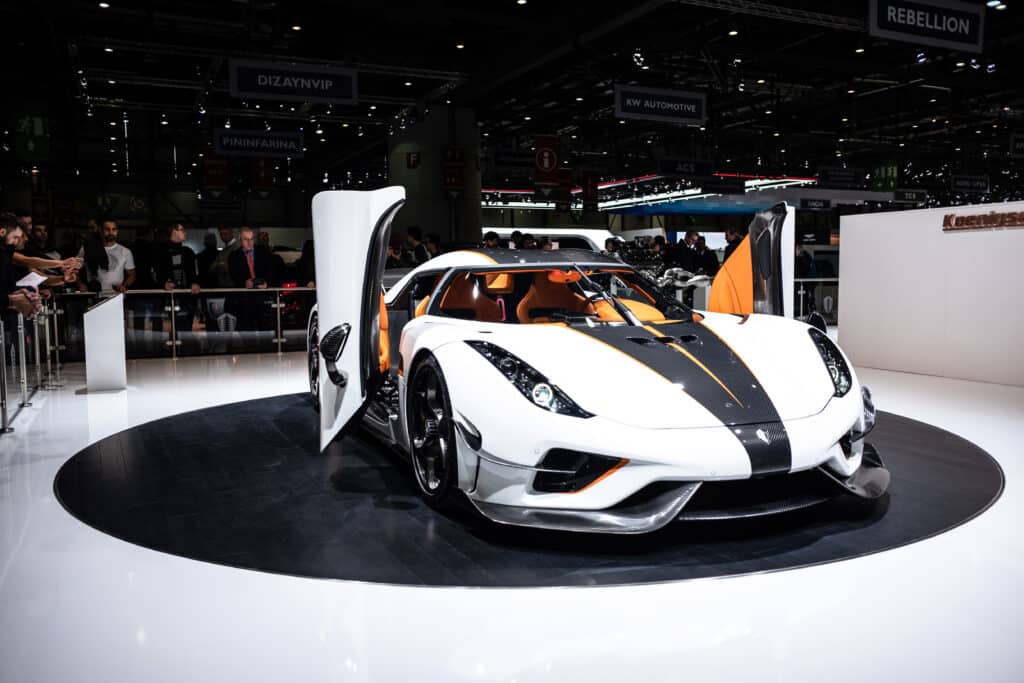
Lamborghini Revuelto
The successor to the Aventador, it is the first series-produced plug-in hybrid supercar in the history of the Sant’Agata Bolognese brand. Combining a 6.5-liter atmospheric V12 engine with 875 horsepower with three electric motors capable of generating up to 150 additional horsepower, it unleashes a total power of 1,015 horsepower. These astonishing performance figures translate into an acceleration capability of 0 to 100 km/h in just 2.5 seconds and a top speed of 350 km/h.
In terms of design, the Revuelto carries the unmistakable DNA of Lamborghini. The body, constructed entirely of carbon fiber, including the monocoque chassis, features extravagant and angular lines, highlighted in both the side air intakes and the front end. The front and rear optical headlights, equipped with LED technology, illuminate in a “Y” shape, and its imposing V12 engine, located longitudinally centrally behind the driver, is visually exposed and aesthetically connected to the two hexagonal-shaped exhaust outlets.
Regarding the price of the Lamborghini Revuelto, its base price ranges around 500,000 euros.
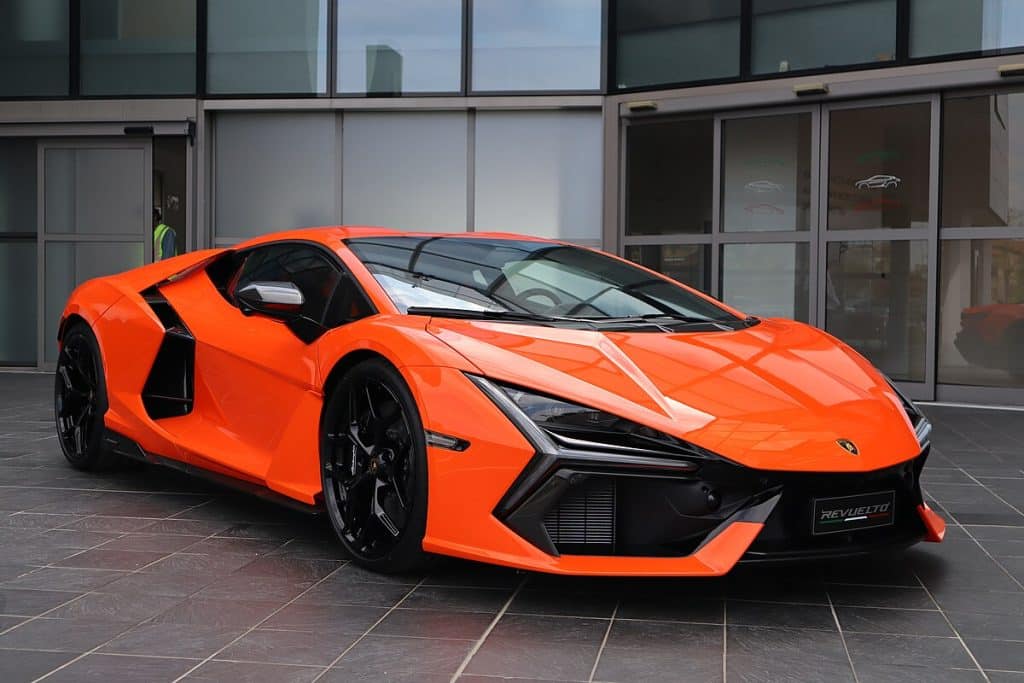
Aston Martin Valkyrie
Developed in collaboration between Aston Martin and Red Bull Advanced Technologies, under the guidance of the renowned designer Adrian Newey, considered by many as the best designer in the history of Formula 1, the Aston Martin Valkyrie is as close as it gets to a Formula 1 car adapted for road use.
Powered by a Cosworth V12 naturally aspirated engine producing 1,001 horsepower, complemented by an electric battery system and coupled to a seven-speed sequential gearbox, it delivers an impressive combined power of 1,150 horsepower. This combination translates into an acceleration from 0 to 100 km/h in just 2.5 seconds and an electronically limited top speed of 355 km/h.
With an extremely aerodynamic and futuristic aesthetic design, it is characterized by fluid lines and muscular curves that extend from the front to the rear. The front end features an aggressive and low nose with prominent air intakes, while the rear section emerges as the most distinctive element, with a groundbreaking design dominated by a prominent diffuser, an active rear wing, and exhaust outlets located at the top of the vehicle.
However, it is inside where the Valkyrie’s Formula 1 DNA is most evident. Both the driver and passenger are seated in a reclined position, with their feet elevated and minimal interior space. The cabin doors close hermetically, and instead of a conventional rear window, a camera system has been implemented that transmits images to internal screens, providing a peripheral view of the surrounding environment. Additionally, all vehicle controls are integrated into the detachable steering wheel, following the distinctive Formula 1 style, which facilitates access to and exit from the vehicle.
With a production limited to just 150 units, the price of the Aston Martin Valkyrie stands at 3.5 million euros.
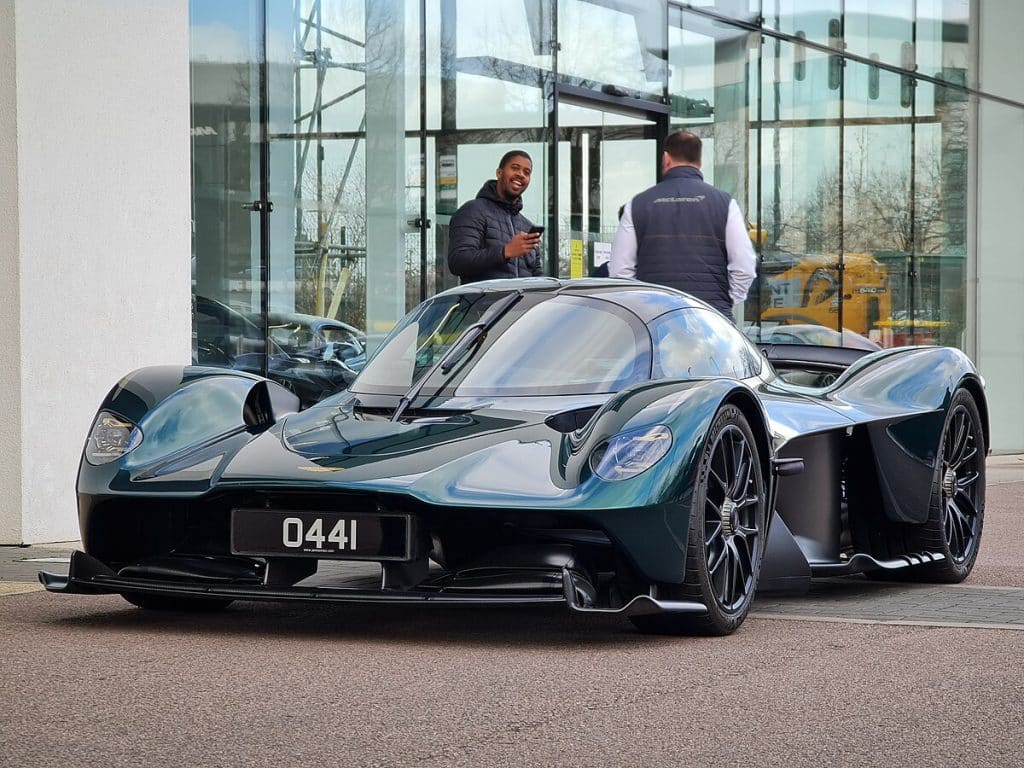
McLaren Artura
The McLaren Artura is the first series-production hybrid from the British manufacturer. While not McLaren’s first hybrid—previous models include the McLaren P1 and the McLaren Speedtail, both with limited production—the Artura is the first to be produced in series and the first plug-in hybrid.
Although the Artura has been conceived from scratch, in its exterior design, we can see how McLaren has drawn inspiration from models in the Sports Series category, with many similarities to the 570S, 540C, or 570 GT. However, this is the first McLaren built on a new carbon fiber structure developed in-house, called the McLaren Carbon Lightweight Architecture (MCLA), designed to optimize hybrid propulsion systems and move away from conventional monocoque structures. The bodywork, on the other hand, is made of aluminum and carbon fiber.
Regarding its performance, it is powered by a 3.0-liter twin-turbo V6 engine producing 585 horsepower, along with a 95-horsepower battery electric propulsion system located on the rear axle, delivering a total power output of 680 horsepower and 720 Nm of torque. In terms of performance, the Artura can accelerate from 0 to 100 km/h in 3.0 seconds, from 0 to 200 km/h in 8.3 seconds, and from 0 to 300 km/h in 21.5 seconds, with a top speed limited to 330 km/h. As for its electric range, it can cover approximately 30 kilometers in fully electric mode, with a maximum speed of 130 km/h.
The base price of the McLaren Artura is 265,000 euros. However, with additional customization options, this figure can easily increase and exceed 300,000 euros.
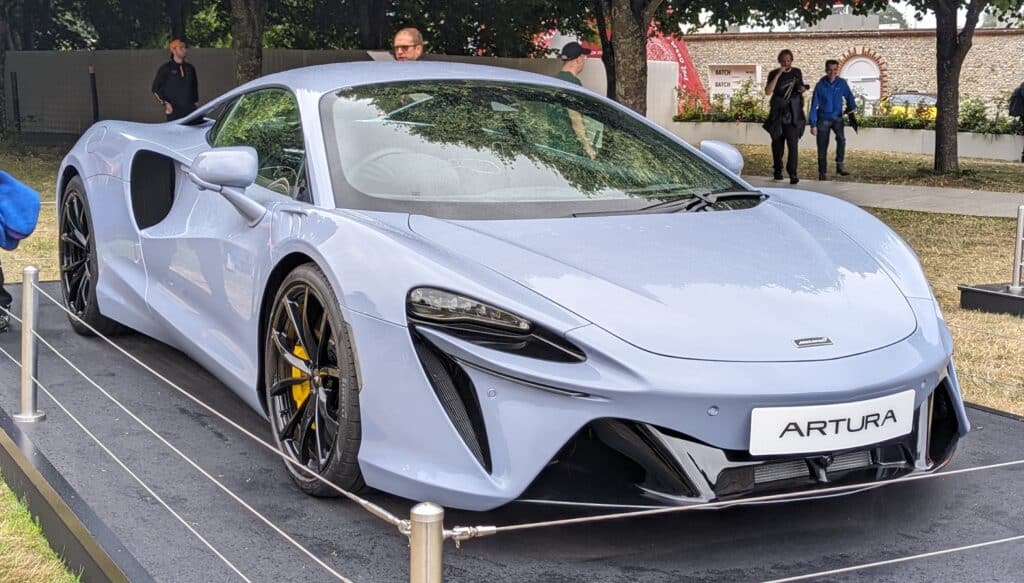
Mercedes-AMG One
Unlike the Aston Martin Valkyrie, which was developed based on Formula 1 technology, the Mercedes-AMG One goes a step further by directly integrating the engine used by the Silver Arrows team in the 2017 Formula 1 season.
Powered by a hybrid propulsion system, it combines a turbocharged 1.6-liter V6 engine, producing 574 horsepower, with four electric motors providing an additional combined power of 611 horsepower, achieving a total output of 1063 horsepower. In terms of performance, it can reach 100 km/h from a standstill in just 2.9 seconds, hit 200 km/h in 7 seconds, and surpass 300 km/h in 15.6 seconds, with an electronically limited top speed of 352 km/h.
However, it’s its aerodynamic features that highlight its astonishing potential. It incorporates a vertical shark fin to improve lateral stability at high speeds, as well as one of the most advanced active aerodynamics systems in the world, comprising an active rear wing and active grilles in the front wheel arches. Additionally, it features NACA-type air intakes and a Formula 1-style roof air intake, giving it a unique and distinctive appearance.
Regarding its interior, it clearly evokes the essence of a racing car. It offers an identical driving position thanks to its carbon monocoque chassis, which integrates fixed seats and pedals, as well as an adjustable steering wheel almost identical to that of the competition model, even retaining the button to activate the DRS.
Mercedes-Benz has limited the production of the Mercedes-AMG One to only 275 units, with an initial price of 2.27 million euros. All units were sold even before production began, and it is estimated that its current value in 2024 reaches 4.3 million euros.
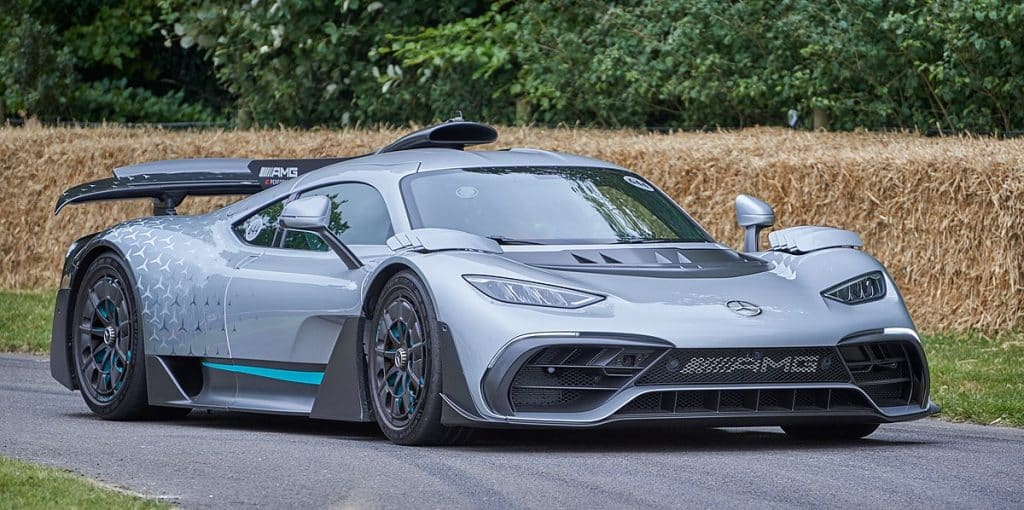
Conclusion
Undoubtedly, the integration of hybrid technology has been a monumental advancement in the automotive industry, taking it to previously unimaginable levels of performance. Manufacturers have achieved impressive power outputs, with models easily surpassing 800, 900, and even 1000 horsepower. Despite these extraordinary capabilities, exclusivity and price remain distinguishing features, with many of these supercars produced in extremely limited quantities and with prices that easily exceed one million euros.
If you wish to experience the astonishing power of a hybrid supercar, our fleet includes the sensational Ferrari 296 GTB. With it, you can feel the incomparable sensation of taking control of a machine of this caliber.


